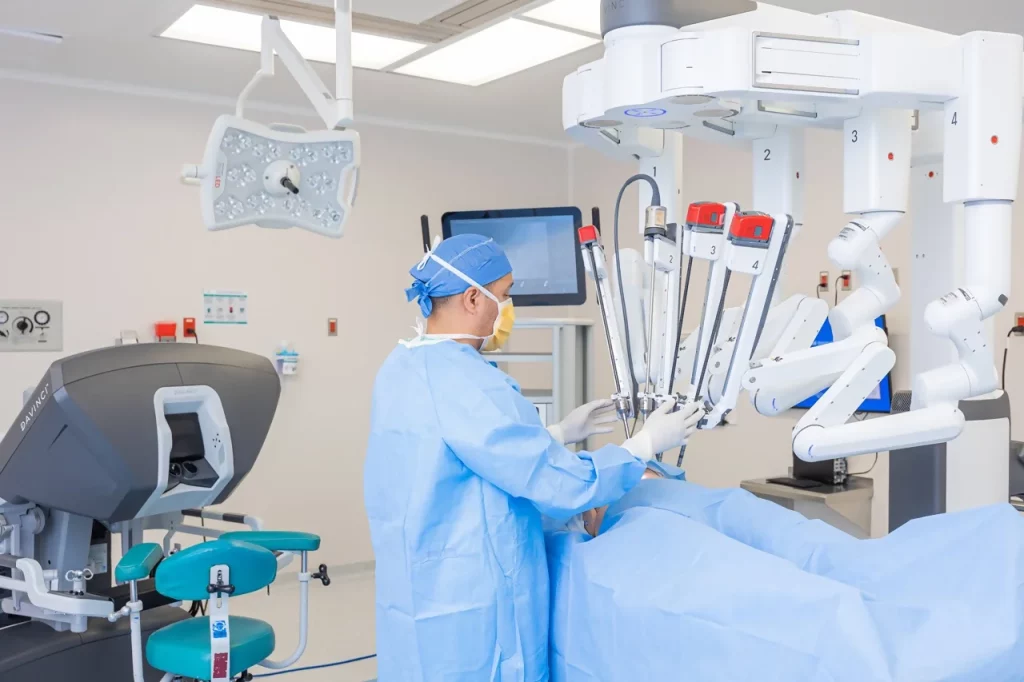The need for surgery varies depending on each patient’s medical condition. Before surgery, an evaluation by a health professional is necessary to determine whether it is truly the right option.
The da Vinci robot is considered one of the most important innovations in contemporary medicine. This is a new device that enables surgeries to be performed in a completely revolutionary way, with less discomfort and, above all, with high precision, resulting in fewer complications. But how does it really work?
For centuries, surgeries around the world were essentially the same: they required making incisions in the patient’s body to access the source of discomfort or perform an internal correction. The drawbacks are wide-ranging, ranging from intense pain to blood loss and prolonged recovery times due to the opening of large areas of muscle and skin, says Dr. Christian Isaac Villeda Sandoval, a urologist at ABC Medical Center and an international professor of robotic surgery.
From the scalpel to the da Vinci robot
Medicine is constantly evolving, and the surgical field is no exception. A cutting-edge technology tool known as the da Vinci robot was created to make surgeries less invasive.
The innovation consists of a state-of-the-art device designed to perform minimally invasive surgeries with exceptional precision and dexterity. This may be concerning given its name, but it should be clarified that the equipment does not operate independently and always requires a highly trained human surgeon to perform any surgery. The robot enhances the capabilities and skills of a skilled surgeon.
Benefits offered by the da Vinci robot
- Greater precision and dexterity: Its robotic arms allow for more precise and delicate movements than those of a human. The robot does not get tired and remains steady.
- Enhanced vision: 3D high-definition vision provides the surgeon with a clear and detailed view of the surgical area. It also offers image magnification or zoom capability.
- Less invasive: The incisions are millimeter-sized, reducing pain, bleeding, and the risk of infection and hernias.
- Faster recovery: Patients typically experience a faster recovery and can return to normal activities sooner than with open surgery.
When discussing the benefits of robotic surgery, they span from the procedure itself to recovery and the reduction of postoperative risks.
What requirements must a surgeon meet to use the da Vinci robot?
To use the da Vinci robotic system, a surgeon must meet a series of requirements that ensure the safety and effectiveness of the procedure, says Dr. Villeda. Among the main ones are:
- Certification: Surgeons must complete a certification program specifically designed for the da Vinci system. Training includes theoretical and practical instruction on robot operation and robotic surgical techniques.
- Technology Knowledge: Surgeons must have a thorough understanding of the da Vinci system technology, including its operation, capabilities, and limitations.
- Previous surgical experience: Surgeons are required to have extensive experience in traditional surgery before using the da Vinci system. This ensures that they have a solid foundation in anatomy, surgical techniques, and management of complications.
- Specialty experience: Surgeons should have expertise in the surgical specialty in which they will be using the da Vinci robot (e.g., urology, gynecology, cardiac surgery).
- Mentoring: During the first robotic surgeries, it is recommended that the surgeon be supervised by a mentor experienced in using the da Vinci system.
- Hospital accreditation: The hospital where robotic surgery is performed must be accredited and have the necessary equipment and personnel.
What types of surgery can the da Vinci robot perform?
There are multiple procedures where the da Vinci robot offers its benefits, including:
- Cardiac surgery for heart valve repair and coronary bypass surgery.
- Prostate surgery, removal of kidney tumors, and repair of urinary obstructions.
- Hysterectomies, uterine fibroid removal, and endometriosis treatment.
- Hernia repair, colon surgery, and gallbladder removal.
- Removal of throat and larynx tumors.
- Thoracic surgery.
- Reconstructive surgery in cases of organ injuries due to previous therapies.
The da Vinci robot has established itself as one of the most powerful tools in modern medicine. Thanks to its use, surgeons can perform complex procedures with greater precision and safety, resulting in improved patient outcomes.
On the other hand, innovation also involves some risks, as although precision is very high, it is not perfect in the end. One of the main challenges today is the limited availability of this equipment. Since it is available in only a few hospitals, its large-scale use within the Mexican medical sector has been hindered.
Finally, the da Vinci robot represents a revolutionary advance in modern surgery, providing patients with more precise, less invasive procedures and faster recovery times. However, its success depends not only on technology, but also on the training of surgeons and the system’s accessibility in hospitals. As medicine continues to evolve, it’s critical to ensure that innovations like this are accessible to more people, ensuring that the surgical precision of the future is a reality for everyone, concludes Dr. Villeda.
The Robotic Surgery department at ABC Medical Center is equipped with the da Vinci robot and features highly trained specialists to perform a wide range of medical procedures.
Fuentes:
Dr. Christian Isaac Villeda Sandoval, urólogo del Centro Médico ABC y profesor internacional de cirugía robótica.
Abexsl, Operarme, Icirugiarobotica



